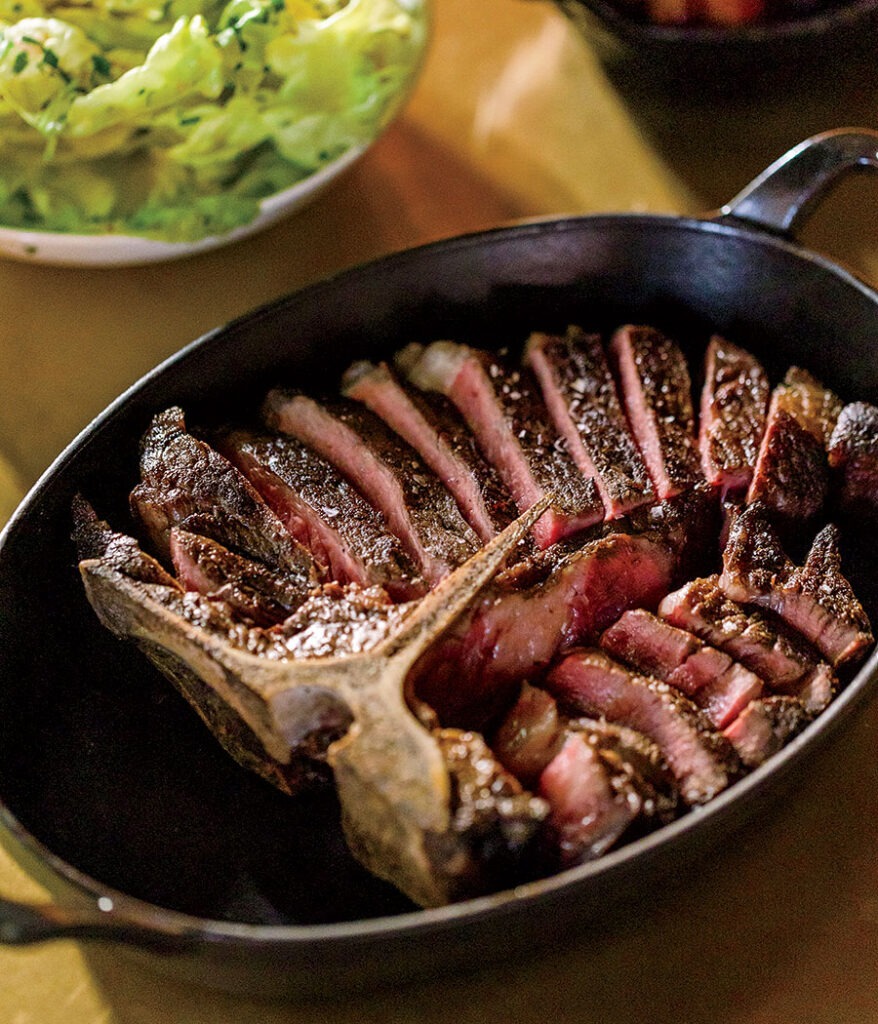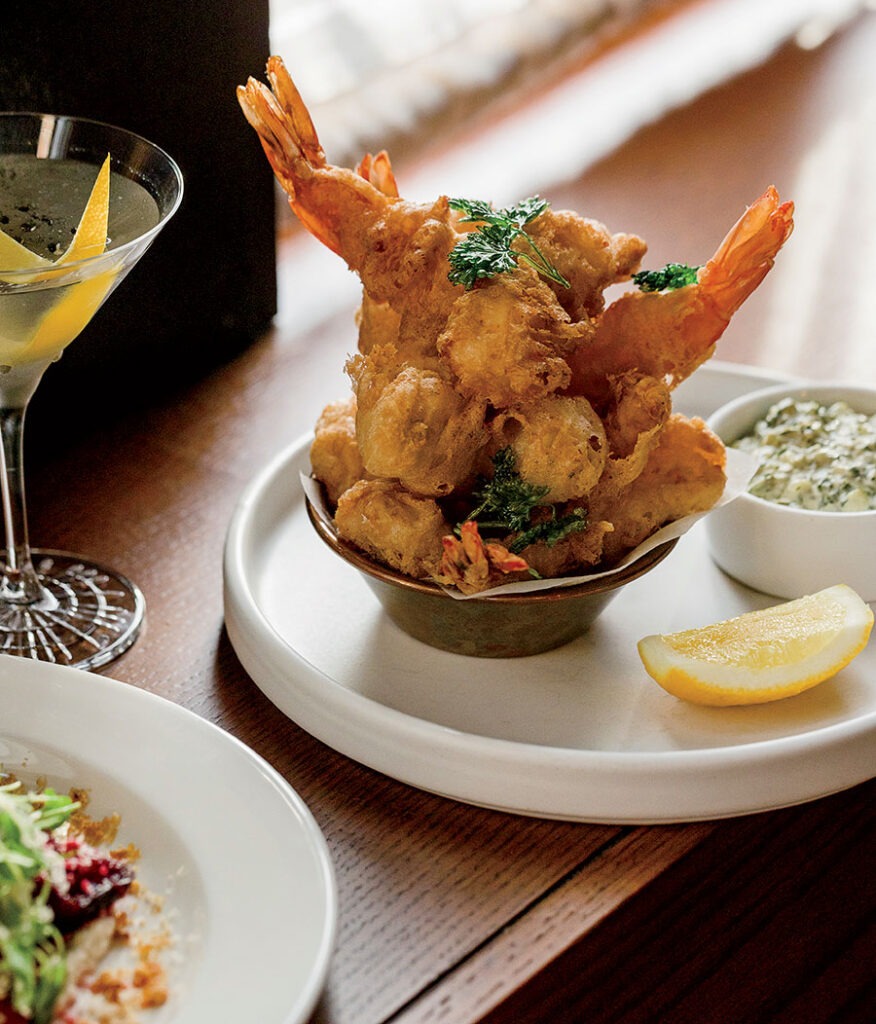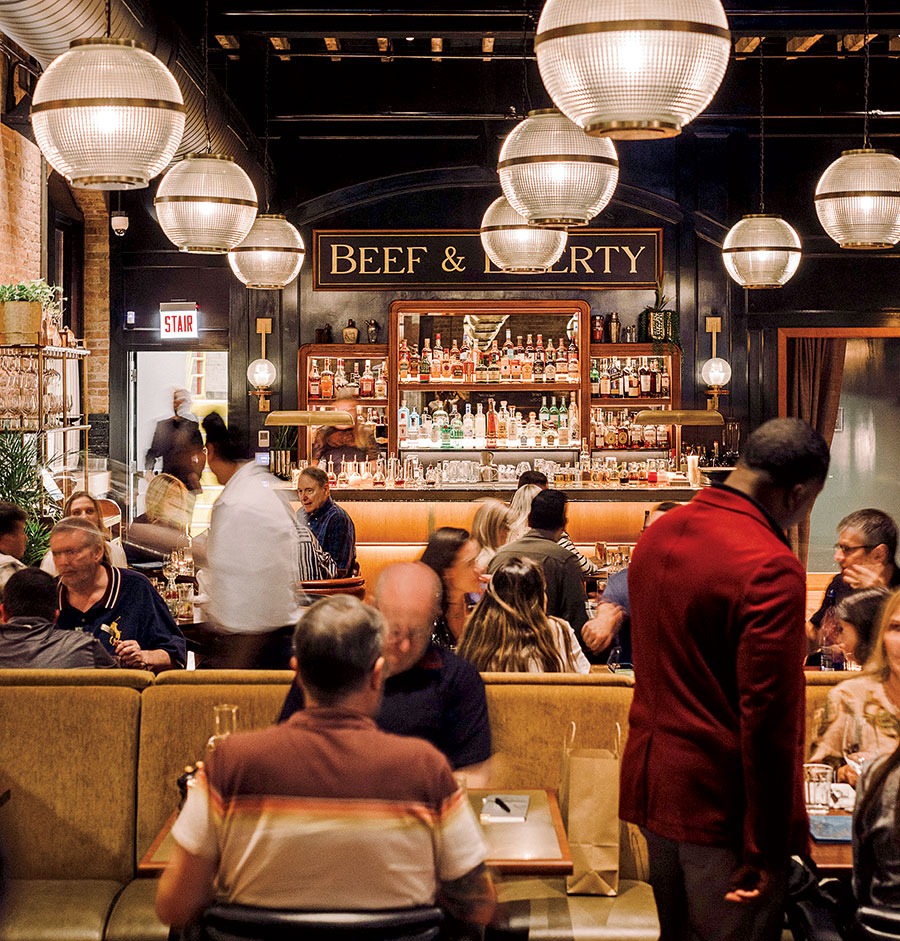The great New York Times restaurant critic Ruth Reichl once described the flavor of dry-aged beef as having a “mineral tang.” It’s a turn of phrase that stuck like a skater’s perfect landing, and over the decades it has been copied incessantly. I’m guilty myself — it can’t be beat. Dry-aging profoundly affects the flavor and texture of beef. It subtly raises its pH and not so subtly raises its price, owing to the sheer amount of weight the meat loses during the process.
When large cuts spend a couple of weeks or more in a cool, controlled environment with good airflow, our ambient microfriends — bacteria, molds, yeasts — go to work. They form a crust that keeps the bad microbes out and works with the meat’s natural enzymes to break down proteins. This process creates edgy flavors you can revel in because the meat no longer tastes and smells like blood.
Hawksmoor, a London import that opened this summer in River North, dry-ages its steaks in-house for 28 days, long enough to change the smell, texture, and flavor of the meat but not so long that it develops a funk. It also sources pasture-raised beef from small farms, a practice that founders Will Beckett and Huw Gott gained fame for with their first location in 2006. I’m crazy about the texture and appreciate the clean, subtly complex flavors of the steaks I tried here, though they lack the buttery richness of wagyu or grain-fed USDA Prime. But even if the steaks aren’t your ideal, you’ll appreciate the excellent cocktails, the bold renovation of the 138-year-old La Salle Street Cable Car Powerhouse (once home to Michael Jordan’s Restaurant), and much of the other food on the uneven but appealing menu — one that carries off its British gastropub stylings with élan. Put it this way: If you can’t get into Bavette’s and have overdone Gibsons, give this place a try.
With a dozen locations in the U.K., Ireland, and New York City, Hawksmoor tries to combat coming off as just another steakhouse chain by tailoring each menu to its locale. The robust drinks lineup offers a number of Chicago-themed cocktails in addition to those that made it famous in the U.K. Y’all are welcome to try the Malört Martinez, but as for me, I’m enjoying the classics, like a sour cherry Negroni that finds the exact pleasure receptor that responds to both bitter cocktails and puckering hard candy. The iciest possible dirty martini made with olive-leaf vermouth and a hint of dry sherry is the reason you want to arrive early for your reservation so you have time to spend at the bar.

That first-floor counter, with its padded high-top chairs, is a luxe perch from which to appreciate the surroundings. The room has been stripped to its impressive bones — its load-bearing beams, timber joists, and mottled brick — then set handsomely with green and blue velvet booths, parquet floors, and wood paneling. Antique Holophane glass pendants glow in a way I’ve always imagined the anbaric light fixtures from The Golden Compass might.
If the host leads you upstairs, don’t think you’re headed to Siberia: It is arguably even prettier up there, and the tables are so well spaced that you can converse without shouting. What to choose? I wish I could find a key to cracking this lengthy and fun menu (when was the last time you were offered two fried eggs as a steak garnish?), but I can’t. Most dishes fall somewhere on the continuum from rib-sticking to stodgy, but it’s impossible to guess how solidly they will land. Fried shrimp? Amazing. They’re huge and butterflied to increase the surface of crackly tempura crunch, ideal to dunk into a zippy jalapeño tartar sauce. Charcoal-roasted scallops are meh: wiggly from chemical preservatives and loaded with soggy breadcrumbs. A tangy salad of ash-roasted beets, coated with a creamy nut sauce and showered with crunchy breadcrumbs, pickled fennel, and grated horseradish, is the sort of side you’d imagine a British steakhouse nailing. Yay. But then oysters roasted with bone marrow and yet more crumbs arrive gooey like uncooked stuffing.
I assume, though, you’re here for the cow. Both a rib eye and a thick T-bone had been hard-seared over charcoal, cut into hefty, three-bite slices, and set inside cast-iron casseroles — the picture of luxury. These steaks aren’t juicy, but they are fine-grained and shockingly tender, with the distinctive nuances I mentioned before. Satisfying if not
meatgasmic. The menu proposes many novel ways to dress your steaks, most notably Beefsteak 1984, inspired by a recipe from H.M. Kinsley, a famous late 19th-century Chicago restaurateur. Alas, that means dousing your meat with those aforementioned oysters and a gloppy, underseasoned bone marrow gravy.

I felt like the meat spoke for itself, but the broad wine list wants to strike up a conversation. I balked at the by-the-glass prices ($55 for Brandlin Estate Cab costs more than some steaks), but there’s value by the bottle. These steaks really cotton to Washington state Cabernets, with their lower ABV, minerality, and structure, and there’s an excellent Hedges Family Estate for just twice retail, at $110.
As for sides, we’re again in crapshoot territory. You shouldn’t miss the beef-dripping chips, a.k.a. the crispiest fries this side of the pond. Marble potatoes tossed with anchovies and chile crisp look smashing but are unevenly cooked; mushrooms Diane sautéed with cognac, shallots, and cream lack zip.
That’s the weird paradox of this restaurant. The menu promises such hearty fare, but the kitchen cooks for meek palates. Even desserts, like a gorgeous sticky toffee pudding, would improve with a pinch of salt and a sharper edge. I applaud Hawksmoor’s fresh approach to a tired genre, but these folks are missing an important quality Americans look for in their steakhouses: It’s not mineral tang so much as flavorful bang.



